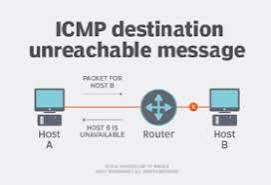
Introduction to IP addresses
In today’s digital world, IP addresses are the unsung heroes of our online experience. They act as unique identifiers for devices on a network, allowing them to communicate and share information seamlessly. Among these myriad numbers, 127.0.0.1 stands out—especially when paired with an unusual port number like 62893.
But what does this combination really mean? Why should you care about it? Whether you’re a curious tech enthusiast or someone navigating through network configurations, understanding 127.0.0.1:62893 can unlock new insights into how your devices interact and troubleshoot issues effectively.
Get ready to dive deeper into the fascinating world of IP addresses as we unravel the mystery behind this specific address and its significance in networking!
What is 127.0.0.1:62893?
127.0.0.1:62893 is an intriguing combination of an IP address and a port number. The IP address 127.0.0.1 refers to the local loopback interface, commonly known as localhost.
This special address allows your computer to communicate with itself for testing and development purposes.
The addition of the port number, 62893, specifies a particular service or application running on that local host.
Ports are essential in networking since they help direct traffic and manage multiple connections seamlessly.
So when you see 127.0.0.1:62893, it signifies not just any connection but one that is specifically tied to your device’s internal processes.
It’s like sending messages through a private channel within your own machine—secure and efficient!
The purpose of 127.0.0.1:62893

The purpose of 127.0.0.1:62893 revolves around local testing and development.
This IP address, often referred to as “localhost,” allows developers to run applications in a safe environment without exposing them to the internet.
The specific port number, 62893, serves as a channel for communication between different services running on your machine.
When you access this address, you’re essentially telling your computer to connect with itself. It’s an efficient way for programmers to test their software before deployment.
Using 127.0.0.1:62893 helps isolate issues early in the development process by simulating how an application will behave once it goes live.
It offers flexibility and control over various networking protocols while eliminating the security risks associated with external connections during testing phases.
Many developers rely on this setup for debugging purposes or when building web applications that require back-end support locally.
How to use 127.0.0.1:62893
Using 127.0.0.1:62893 is quite straightforward, especially for developers and tech enthusiasts. This IP address points to your local machine, making it a convenient tool for testing applications.
To start using it, open your command prompt or terminal window. Type the relevant commands that direct traffic through this loopback address, ensuring you specify port 62893 where necessary.
Many development environments allow you to set this as the default server during testing phases. It isolates your work from external influences while providing real-time feedback.
Web browsers can also access services running on this port by entering “http://127.0.0.1:62893” directly into the URL bar.
This approach helps troubleshoot issues without affecting live servers or other users’ experiences in production settings.
Advantages and disadvantages of using 127.0.0.1:62893
Using 127.0.0.1:62893 comes with distinct advantages.
First, it allows for safe testing in a controlled environment. Developers can run applications without exposing them to outside threats. This isolation enhances security during the development phase.
Additionally, accessing localhost is incredibly fast as it bypasses network latency. It enables immediate feedback when troubleshooting or debugging applications.
However, there are disadvantages too.
One major drawback is that not all features may work as intended on localhost compared to a live server environment. Some network protocols might behave differently when isolated from external connections.
Another consideration is the potential for misconfigurations leading to issues that only appear once deployed externally.
Common misconceptions about 127.0.0.1:62893
A lot of people think 127.0.0.1:62893 is just a random string of numbers. In reality, it represents something more significant in the world of networking.
Some believe that using this address can expose their system to external threats. This isn’t true; 127.0.0.1 is known as the loopback address, which means it only points back to your own machine.
Another misconception is that ports like 62893 are fixed or universally assigned for specific applications. Port numbers can be dynamic and dependent on what services you’re running at any given time.
Some users may underestimate its utility in development environments, not realizing how essential it is for testing and debugging applications without affecting live servers.
How Does 127.0.0.1:62893 Work?
The IP address 127.0.0.1 is known as the loopback address, a special designation for your own computer. Any data sent to this address doesn’t leave your machine; it loops back internally.
When you add the port number, like :62893, you’re specifying a particular service or application running on that machine. Ports help manage multiple services at once by directing traffic appropriately.
For example, if you’re running a web server locally and it’s set to listen on port 62893, accessing http://127.0.0.1:62893 in your browser connects you directly to that server without any external interference.
This setup allows developers to test applications safely before deploying them online while keeping their work isolated from public networks, enhancing security during development phases.
Understanding its mechanics enables more efficient troubleshooting and testing of network applications right from your desktop environment.
Why Is 127.0.0.1:62893 Important?
The importance of 127.0.0.1:62893 lies in its function as a loopback address, which allows your computer to communicate with itself. This is essential for testing and development purposes, especially for software developers who need to simulate various network conditions without affecting external systems.
Using this IP address enables developers to run applications locally before deploying them on live servers. The port number 62893 adds another layer by allowing multiple services or applications to operate simultaneously without conflict.
Security also plays a role here; using the loopback interface helps prevent unwanted external access during testing phases. By isolating processes within the local machine, it minimizes potential vulnerabilities that could arise from outside interference.
Understanding this configuration can significantly enhance troubleshooting efficiency too, making it easier to pinpoint issues within local environments before they escalate into larger problems on production networks.
Practical Uses for 127.0.0.1:62893
127.0.0.1:62893 serves as a vital tool for developers and system administrators alike.
One practical use is in web development. When testing websites locally, this address allows access to the server without involving external networks. It streamlines the process of debugging and refining applications.
Another application lies in database management systems. Developers can connect directly to local databases using 127.0.0.1:62893, helping them manage data securely and efficiently without exposing it to potential threats from outside sources.
Network security professionals also benefit from this IP address when analyzing vulnerabilities within their own systems, ensuring that they maintain a robust defense against attacks.
Additionally, software engineers often utilize 127.0.0.1:62893 to run multiple instances of applications independently on their machines while avoiding port conflicts or interference with other running services.
These varied uses highlight its significance across multiple tech landscapes.
Troubleshooting Common Issues with 127.0.0.1:62893
When working with 127.0.0.1:62893, users may encounter several common issues.
One frequent problem is connection errors. Ensure that the service you’re trying to access is running on the specified port. If it isn’t active, you’ll face difficulties reaching it.
Another issue stems from firewall settings blocking your requests. Check if your security software allows traffic through port 62893 and adjust settings accordingly.
If you’re using a web browser for local testing, clear the cache or try a different browser altogether—sometimes cached data can cause unexpected behavior.
Ensure that any necessary dependencies are installed correctly on your local machine. Missing components can lead to frustrating failures in accessing services via this IP address and port combination.
Taking these steps should help resolve most hiccups related to 127.0.0.1:62893 effectively.
Conclusion
Understanding the nuances of 127.0.0.1:62893 allows users to navigate their networks and applications with confidence. This loopback address serves as a vital tool for developers, IT professionals, and anyone involved in network management.
By leveraging this IP address effectively, you can troubleshoot issues locally without impacting external connections. However, it’s essential to be aware of its limitations and avoid common misconceptions that could hinder your understanding.
As technology continues to evolve, mastering concepts like 127.0.0.1:62893 is crucial for enhancing your digital literacy and ensuring seamless connectivity within local environments. Whether you’re running tests or developing new software solutions, keep exploring the possibilities this unique address offers in networking realms.
Also read: Ztec100.com



1 thought on “Understanding 127.0.0.1:62893: What It Means and How to Use It”